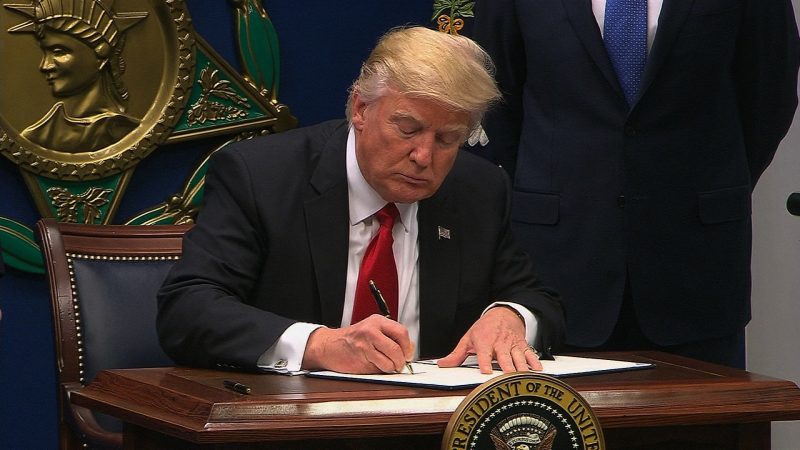Take two of President Donald Trump’s travel ban could once again bring refugee resettlement in the United States grinding to a halt.
Like the executive order Trump signed in January, the version he signed Monday calls for a four-month pause in the refugee resettlement program.
Here’s a look at what’s happened with refugee resettlement since January, and what could happen next.
What’s happened since the first travel ban
• Federal court decisions in February temporarily blocked the provision in Trump’s original executive order that halted refugee resettlement. That allowed a new wave of refugees to come to the United States.
• According to the Refugee Processing Center, 4,355 refugees (1,764 cases) have arrived in the United States in the past month. The month before Trump’s inauguration, 6,197 refugees (2,385 cases) arrived.
• For weeks, refugee organizations have been sounding alarm bells over one provision in the first travel ban that still stands, no matter what officials do next: The Trump administration has reduced the total number of refugees to be admitted to the United States in fiscal year 2017 from 110,000 to 50,000. Last year, the US admitted nearly 85,000 refugees. And Obama had raised the ceiling for this year.
• So far some 37,000 refugees have been resettled in the United States this fiscal year, which began in October and ends September 30. “So there’s not many slots left for the rest of the fiscal year,” said Melanie Nezer, vice president for policy and advocacy at HIAS, an international Jewish nonprofit organization dedicated to protecting refugees.
• This reduction in refugee admittances has already had an impact on the organizations that help resettle them. One such group, World Relief, announced last month that it was laying off more than 140 people and closing five local offices as a result of the travel ban.
What’s next?
• It’s likely the latest executive order also will face legal challenges. In a statement Monday, the director of the ACLU’s Immigrants’ Rights Project already appeared to be bracing for a fight. Trump “can expect continued disapproval from both the courts and the people,” Omar Jadwat said.
• The International Rescue Committee, which helps resettle refugees, said in a statement that the latest executive order will harm 60,000 refugees already vetted for resettlement in to the United States. “These refugees are now stranded in crisis zones, in many cases separated from their families in the United States,” the IRC said.
• Administration officials, speaking on background and seeking to buttress their case for the latest measures, have stressed that there are some notable differences in the new executive order. The original travel ban, for example, said Syrian refugees would be banned indefinitely. The latest version doesn’t single them out, an administration official told reporters on Monday. Another difference: refugees who’ve already had their travel scheduled by the US Department of State won’t be impacted, the order says.
• Officials also are pointing to examples that they say show how the refugee program could be a gateway for those who want to harm the United States. “Many people seeking to support or commit terrorist acts will try to enter through our refugee program,” Attorney General Jeff Sessions said. The executive order references two cases: Two Iraqi men in Kentucky who were sentenced in 2013 for plotting to help al Qaeda and a Somali man in Oregon who was sentenced in 2014 for plotting to bomb a Christmas-tree lighting. The executive order also says more than 300 refugees in the United States are subjects of counterterrorism investigations, citing the attorney general, but provides no supporting information for that claim.
• According to refugee resettlement organizations, a pause in the program may sound small, but it can have a major impact on individual cases, since so many clearances have specific time limits. “A pause is not a pause,” Nezer said last week. “A pause could mean years or forever for many individual refugees, because screenings expire and have to be redone, and that, again, could take years.”
